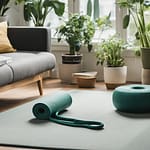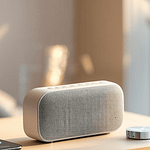
Affordable Home Workout Routines (No Equipment Needed)
Affordable home workout routines are not just a myth whispered among penny-pinching fitness enthusiasts; they are a very real and very doable alternative to pricey gym memberships and expensive equipment. Picture this: You, in the comfort of your own living space, channeling the spirit of frugality as you lunge, squat, and burpee your way to a healthier you—all without the daunting glare of that overly enthusiastic gym instructor or the suspiciously sticky communal yoga mats. Yes, you can indeed break a sweat without breaking the bank, and I’m here to guide you through the promised land of budget-friendly biceps and wallet-friendly washboard abs.
Now, let’s set the scene. You’re decked out in your most motivational workout gear—the t-shirt with the slightly faded slogan that reads “I’m not sweating, I’m sparkling”—ready to tackle a fitness routine that doesn’t require remortgaging your house. The living room is your new fitness domain, a place where coffee tables become plyometric boxes and staircases transform into the StairMaster of your dreams (or nightmares, depending on your relationship with cardio).
As you embark on this journey through the land of affordable home workout routines, you’ll discover that the only weight you’ll be lifting is the weight of your own body—no dumbbells, no kettlebells, not even those tiny pink ones that somehow always end up being more decorative than functional. And the best part? You’ll be dodging those sneaky hidden costs that often accompany the quest for fitness, like the gas money you’d spend driving to the gym or the overpriced smoothie you’d buy afterward because, let’s face it, you’ve “earned it.”
In this blog post, we’re going to dive deep into the world of no-equipment-necessary exercises that will make both your body and your wallet feel surprisingly light. We’ll explore the art of turning household items into muscle-toning machines and the science of using your body’s own resistance to craft a workout that would make even the most seasoned of gym-goers nod in approval. From high-intensity interval training (HIIT) that you can do in your pajamas to core-crushing moves that might just make you the envy of all those six-pack flaunting Instagram influencers, we’ve got you covered.
So, whether you’re a fitness newbie looking to dip your toes into the exercise pool without diving headfirst into debt, or a seasoned pro searching for ways to keep your routine fresh and your finances in check, buckle up! You’re about to embark on a thrilling, endorphin-fueled adventure that proves once and for all that when it comes to getting fit, the best things in life (or at least the most affordable and hilarious ones) are indeed free.
Overview
Staying active and healthy is essential, but it can be challenging to find the time and money to hit the gym regularly. Fortunately, there are plenty of affordable home workout routines that you can do in the comfort of your own home. Not only are these workouts budget-friendly, but they also eliminate the need to travel to a gym, saving you time and energy.

One of the best things about home workouts is that they can be tailored to your specific needs and fitness level. Whether you’re a beginner or an experienced athlete, there are routines that can challenge you and help you achieve your fitness goals. From bodyweight exercises to yoga and Pilates, there are many different types of workouts that you can do at home without any equipment or with minimal equipment.
In this article, we’ll explore some of the most effective and affordable home workout routines that you can try today. We’ll provide step-by-step instructions for each workout and offer tips on how to modify them to suit your fitness level. So, whether you’re looking to build muscle, lose weight, or improve your overall fitness, we’ve got you covered with these budget-friendly home workouts.
Establishing a Solid Foundation
As we embark on our journey towards a healthier lifestyle, it’s important to establish a solid foundation. This foundation will serve as the backbone of our at-home workout routine. In this section, we will cover two key aspects of building this foundation: setting realistic goals and understanding the basics of physical fitness.
Setting Realistic Goals
Setting realistic goals is crucial to the success of any workout routine. It’s important to keep in mind that we won’t see results overnight, and that’s okay. We need to be patient and consistent in our efforts.
To set realistic goals, we need to consider our current level of fitness and any limitations we may have. It’s also important to identify our motivation for working out. Are we looking to improve our overall health, increase our strength, or simply stay active? Once we have a clear understanding of our goals, we can begin to create a plan that aligns with them.
Understanding the Basics of Physical Fitness
Before we dive into specific workouts, it’s important to have a basic understanding of physical fitness. This includes understanding the different components of fitness, such as strength, endurance, and flexibility.
Strength is the ability to generate force against resistance. Endurance is the ability to sustain physical activity over time. Flexibility is the ability to move joints through their full range of motion. By incorporating exercises that target each of these components, we can create a well-rounded workout routine.
In addition, it’s important to understand the principles of overload and progression. Overload refers to increasing the intensity, duration, or frequency of our workouts to continue challenging our bodies. Progression refers to gradually increasing the intensity or difficulty of our workouts over time. By applying these principles, we can continue to see improvements in our fitness level.
By setting realistic goals and understanding the basics of physical fitness, we can establish a solid foundation for our at-home workout routine. With consistency and dedication, we can achieve our fitness goals without breaking the bank.
Designing Your Home Workout Routine

When it comes to designing an effective home workout routine, there are a few key factors to consider. By crafting a balanced program that incorporates both strength and cardio exercises, adjusting intensity and duration, and taking rest periods into account, you can create a full-body workout that will help you reach your fitness goals.
Crafting a Balanced Program
To create a well-rounded home workout routine, it’s important to incorporate both strength and cardio exercises. Strength training helps build muscle and increase metabolism, while cardio exercises improve cardiovascular health and burn calories. By combining both types of exercises, you’ll be able to achieve a full-body workout that targets all major muscle groups.
Incorporating Strength and Cardio
When designing your home workout routine, be sure to include a mix of strength and cardio exercises. For strength training, focus on exercises that target all major muscle groups, such as squats, lunges, push-ups, and rows. For cardio, consider exercises that get your heart rate up, such as jumping jacks, high knees, and jumping rope. By alternating between strength and cardio exercises, you’ll be able to keep your heart rate up while also building muscle.
Adjusting Intensity and Duration
To get the most out of your home workout routine, it’s important to adjust the intensity and duration of your exercises. This will help you avoid plateauing and keep your body challenged. When it comes to strength training, aim for 8-12 reps per exercise and 2-3 sets per muscle group. For cardio, aim for at least 30 minutes of moderate-intensity exercise per day. As you progress, consider increasing the weight or intensity of your exercises to keep challenging your body.
By following these tips, you can create an effective and affordable home workout routine that will help you reach your fitness goals. Remember to take rest periods into account, and to listen to your body to avoid injury. With dedication and consistency, you can achieve a full-body workout that will leave you feeling strong and energized.
Essential Exercises for Home Workouts

When it comes to home workouts, it’s important to have a variety of exercises to keep things interesting and challenging. Here are some essential exercises that we recommend incorporating into your routine:
Bodyweight Exercises and Variations
Bodyweight exercises require no equipment and can be done anywhere, making them perfect for home workouts. Squats and lunges are great for working the lower body, while planks and push-ups target the core and upper body. To add variation, try different types of squats and lunges, such as jump squats or reverse lunges. You can also modify planks and push-ups by adding in side planks or diamond push-ups.
Utilizing Resistance Bands and Weights
Resistance bands and weights can add an extra challenge to your home workouts. Resistance bands are great for targeting specific muscle groups, such as the glutes or biceps. Weights can be used for exercises like squats, lunges, and bicep curls. When using weights, it’s important to start with a weight that is comfortable for you and gradually increase as you get stronger.
High-Intensity Interval Training (HIIT) Techniques
HIIT involves short bursts of intense exercise followed by periods of rest. This type of training can be done with bodyweight exercises, resistance bands, or weights. Jumping jacks, mountain climbers, and burpees are all great exercises to incorporate into a HIIT routine. HIIT workouts are great for burning calories and improving cardiovascular fitness.
Incorporating these essential exercises into your home workout routine can help you achieve your fitness goals. Remember to start slow and gradually increase the intensity as you get stronger. With consistency and dedication, you can achieve a great workout from the comfort of your own home.
Equipment and Space Considerations

When it comes to creating an affordable home workout routine, equipment and space considerations are essential. Here are some tips to help you choose the right equipment and maximize your workout space.
Choosing the Right Equipment
One of the best things about working out at home is that you don’t need a lot of fancy equipment to get a good workout. Here are some affordable options to consider:
Dumbbells: Dumbbells are versatile and can be used for a variety of exercises. Look for adjustable dumbbells that you can add or remove weight plates from, so you can change the weight as needed.
Resistance bands: Resistance bands are a great alternative to weights and can be used for a variety of exercises. They’re also lightweight and easy to store.
Yoga mat: A yoga mat provides a comfortable surface for floor exercises and can also be used for yoga and stretching.
Exercise ball: An exercise ball is great for core exercises and can also be used for stretching and balance exercises.
Remember, you don’t need to buy everything at once. Start with a few basic pieces of equipment and add to your collection as you go.
Maximizing Your Workout Space
When it comes to working out at home, space can be a concern. Here are some tips to help you maximize your workout space:
Clear the clutter: Clear out any unnecessary items from your workout space to create more room.
Use multi-purpose equipment: Look for equipment that can be used for multiple exercises, such as resistance bands or an exercise ball.
Use your body weight: Bodyweight exercises don’t require any equipment and can be done anywhere.
Invest in space-saving equipment: Look for equipment that can be easily stored, such as adjustable dumbbells or a foldable workout bench.
Wear the right shoes: Wearing the right shoes can help you feel more stable and prevent injury.
By choosing the right equipment and maximizing your workout space, you can create an effective and affordable home workout routine.
Maintaining Safety and Preventing Injury

When it comes to working out at home, safety should always be a top priority. Here are a few tips to help you maintain safety and prevent injury during your affordable home workout routines.
Proper Form and Technique
One of the most important things you can do to prevent injury during your home workouts is to use proper form and technique. This means paying close attention to your posture, alignment, and movement patterns as you exercise.
If you’re not sure how to perform a particular exercise with proper form, consider consulting a personal trainer or fitness professional. They can help you learn the correct technique and provide feedback on your form to ensure you’re doing the exercise safely and effectively.
Warm-Up and Cool-Down Routines
Another key element of injury prevention is warming up before you exercise and cooling down afterward. Warming up helps to increase blood flow to your muscles, which can reduce your risk of injury and improve your performance during your workout.
A proper warm-up should include some light aerobic activity, such as jogging in place or jumping jacks, as well as some dynamic stretching exercises to help prepare your muscles for the workout ahead.
Similarly, a cool-down routine should include some gentle stretching exercises to help your muscles relax and recover after your workout. This can help to reduce muscle soreness and stiffness and improve your overall recovery time.
Remember, if you have any underlying health conditions or concerns, it’s always a good idea to consult with your doctor before starting a new workout routine. They can help you determine what types of exercises are safe and appropriate for your individual needs and help you develop a workout plan that will help you achieve your fitness goals while minimizing your risk of injury.
Frequently Asked Questions

What are some effective full body workouts I can do at home without equipment?
There are several effective full body workouts that can be done at home without equipment. Some examples include bodyweight squats, push-ups, lunges, planks, and mountain climbers. These exercises work multiple muscle groups at once and can be modified to fit different fitness levels.
How can I create a weekly workout schedule that’s suitable for beginners exercising at home?
When creating a weekly workout schedule for beginners exercising at home, it’s important to start with a manageable amount of exercise and gradually increase the intensity and duration over time. A good starting point is to aim for at least 30 minutes of exercise 3-4 times per week. Incorporating a mix of cardio, strength training, and flexibility exercises can help to create a well-rounded workout routine.
Can I achieve fitness goals with home workouts that are 20 minutes long?
Yes, it’s possible to achieve fitness goals with home workouts that are 20 minutes long. The key is to make the most of the time available by choosing exercises that work multiple muscle groups at once and incorporating high-intensity intervals. Consistency is also important, so aim to do these short workouts regularly throughout the week.
How do I structure a six-week workout plan at home without needing any equipment?
To structure a six-week workout plan at home without needing any equipment, start by setting specific goals and determining the types of exercises that will help you reach those goals. Then, create a schedule that includes a mix of cardio, strength training, and flexibility exercises. Aim to gradually increase the intensity and duration of your workouts over the six-week period to continue challenging your body and seeing progress. Remember to also incorporate rest days to allow your body to recover and prevent injury.
Final Thoughts on Affordable Home Workout Routines
And there you have it, folks—the grand finale of our no-cost, high-fun, and endlessly inventive odyssey through the world of affordable home workout routines. You’ve lunged and laughed, planked and probably grimaced, all without the need for those fancy gadgets and gizmos that infomercials insist are essential for a chiseled physique. We’ve navigated the treacherous terrain of temptation that is the fitness industry’s gadget aisle and emerged victorious, armed with nothing but our own body weight and a can-do attitude that’s as infectious as a viral cat video.
As we cool down and stretch out those well-worked muscles, let’s take a moment to reflect on the journey we’ve just completed. We’ve turned our humble abodes into personal fitness studios, where the only membership fee is our commitment and the dress code is decidedly ‘come as you are’. We’ve discovered that the most effective workout equipment isn’t sold on a late-night infomercial—it’s the determination within us and the creativity we bring to each bodyweight rep.
Before you click away, pat yourself on the back (go ahead, it’s a great shoulder stretch!) for taking the initiative to prioritize your health and fitness without falling prey to the notion that it has to cost a fortune. Remember, the path to physical wellness doesn’t need to be lined with dollar bills—it just needs to be walked on, jogged on, or if you’re feeling particularly adventurous, bear-crawled on.
As we part ways, don’t let this be the end of your affordable fitness journey. Let it be the beginning of a beautiful friendship between you and your newfound love for wallet-friendly workouts. Keep experimenting with new moves, laughing at the absurdity of a well-timed burpee, and above all, keep embracing the sheer joy of moving your body in ways that don’t require a swipe of your credit card.
Until our next fitness frolic, keep those spirits high and those expenses low. Remember, the only thing that should be getting lighter is you, not your bank account. Keep pushing, keep playing, and keep proving that the best things in life—and fitness—are not only free but also just a hop, skip, and a jump away.





































